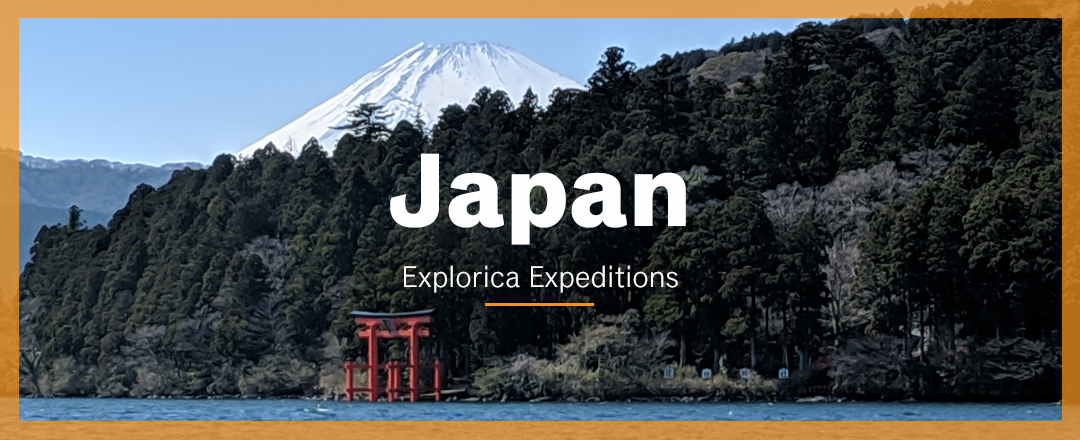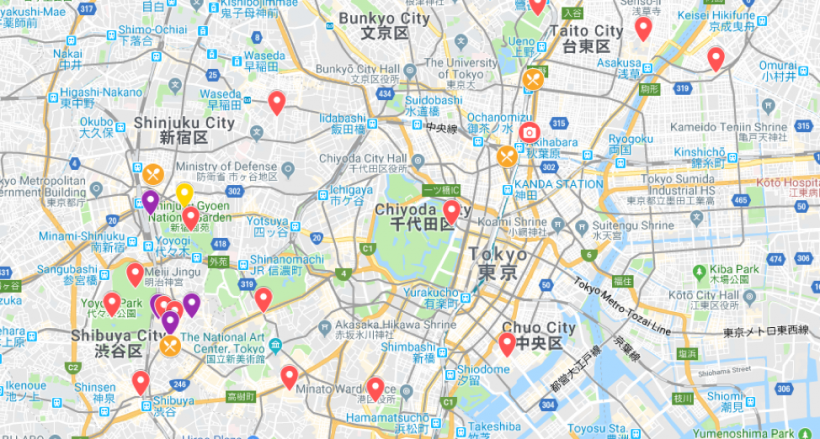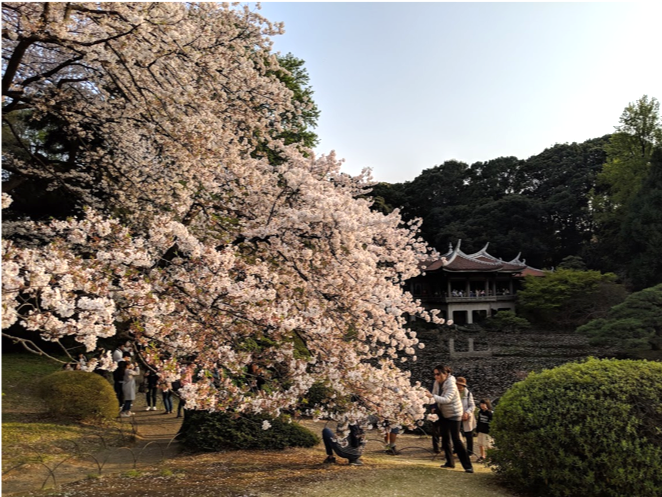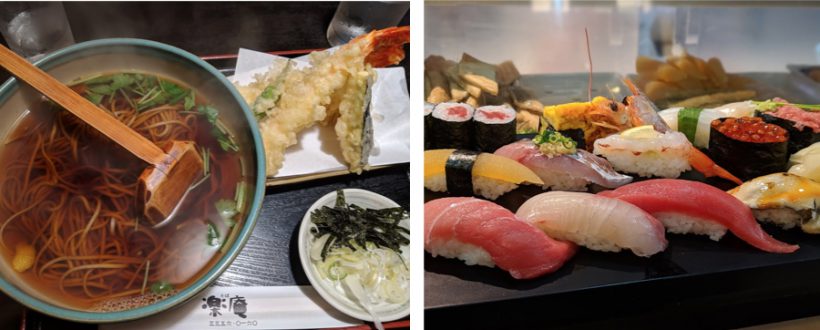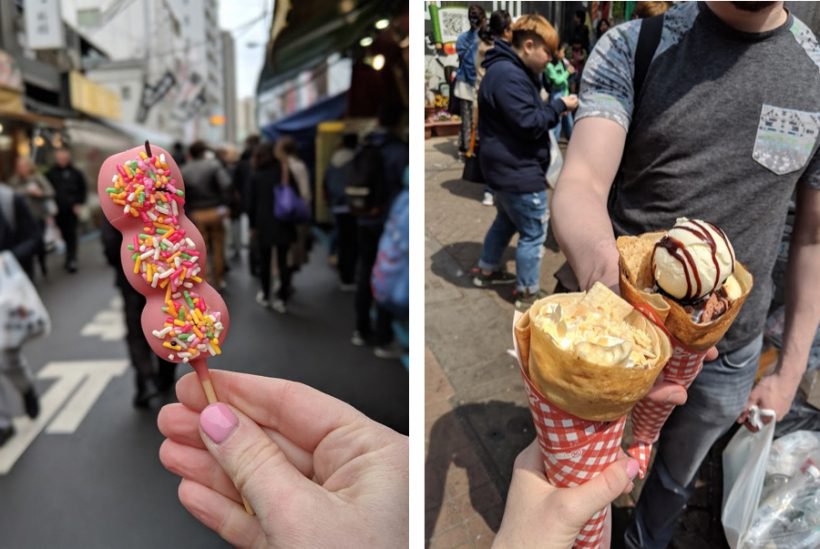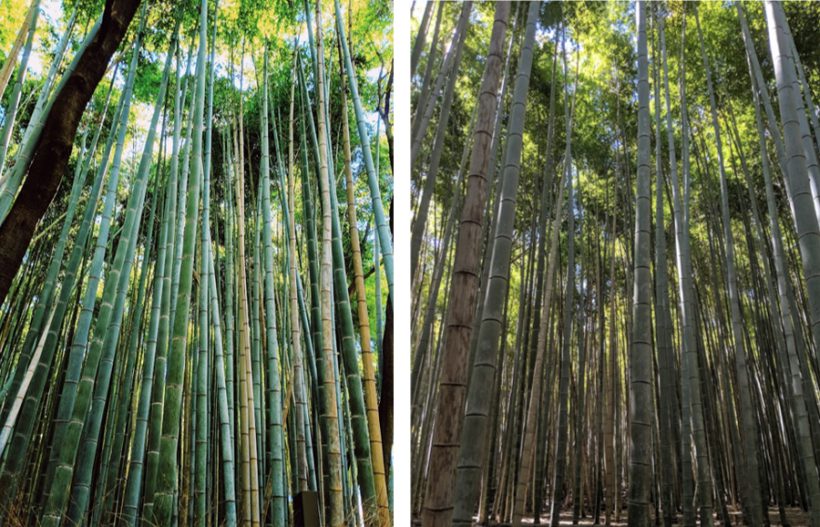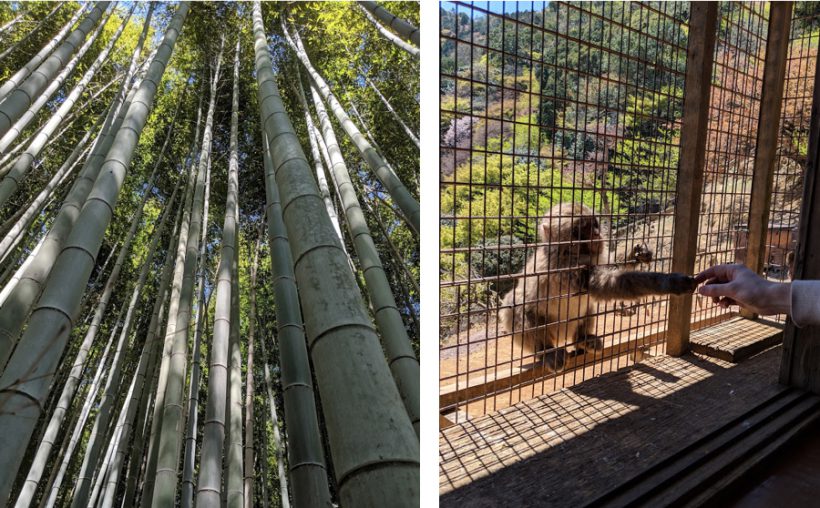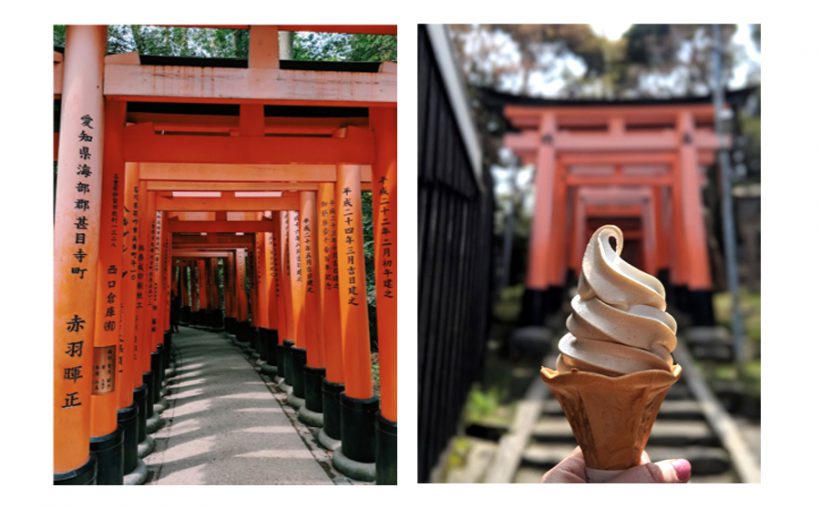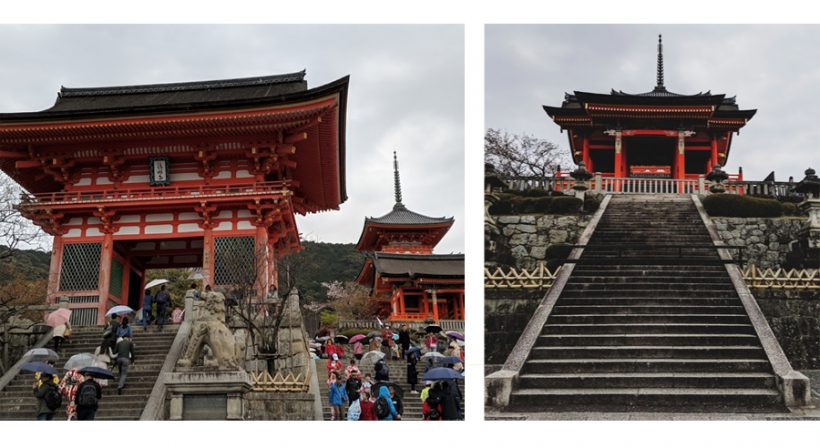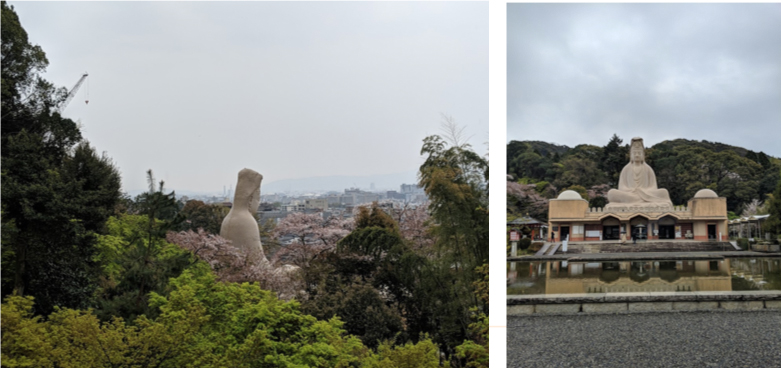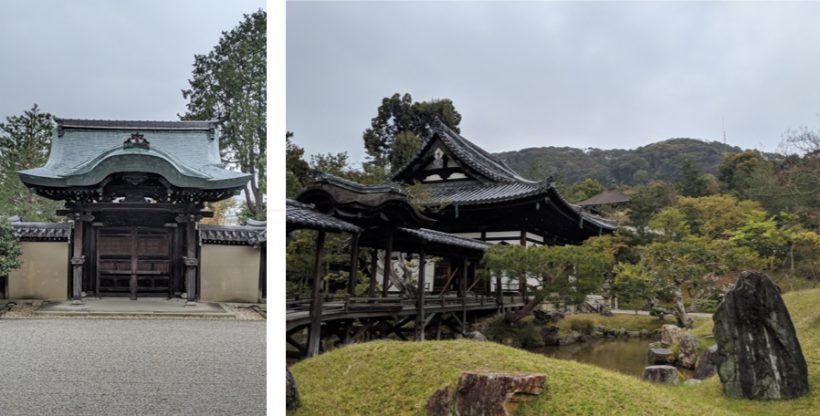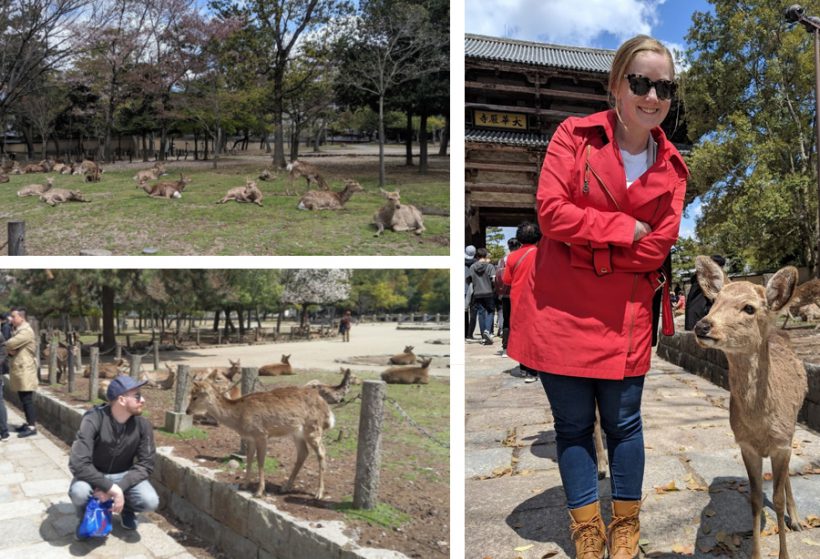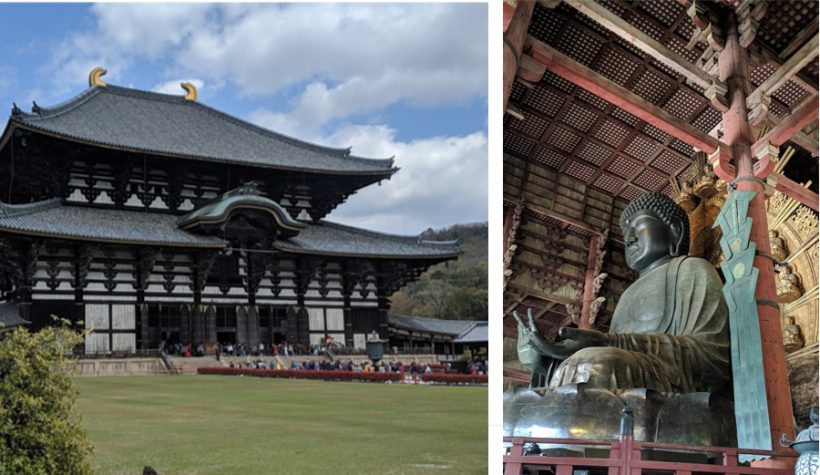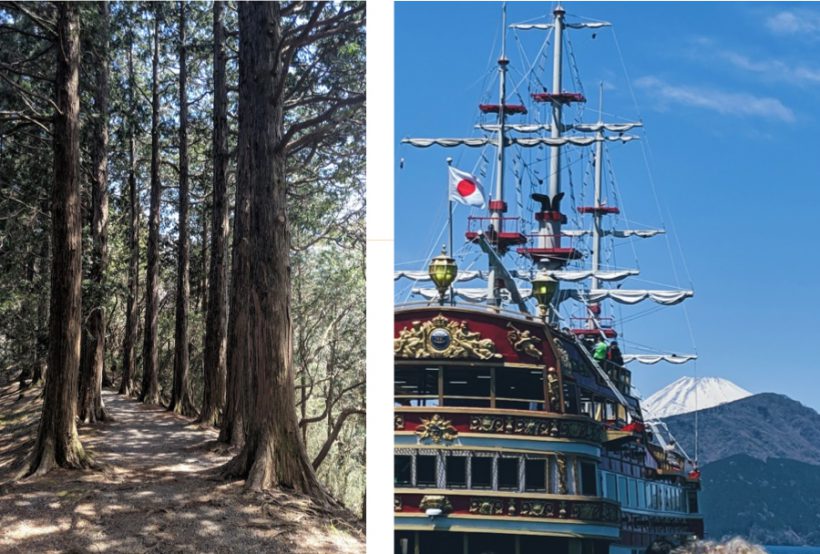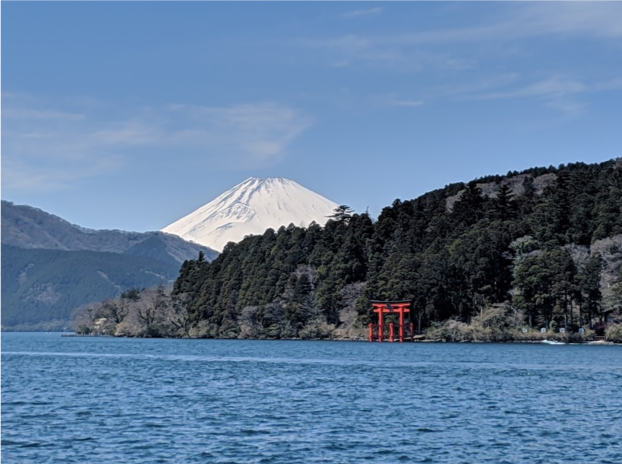If I’m being honest, when I booked my flight from New York to Tokyo, I didn’t have much planned other than “I am going to Japan”. The country had been on my ‘bucket list’ for quite some time, but had never made its way to the top since it’s so far away, and flights can get very pricey. But, when I found a good deal, I knew I had to jump on it!
My first order of business was to plan out the itinerary. I knew I would fly in and out of Tokyo, and just had to fill in the other 12 days. Luckily, I had a few good places to start. Explorica offers three similar yet unique itineraries to Japan: Tokyo, Kyoto, & Osaka, Japan Highlights, and Japan in Depth. I started the planning process by studying these itineraries and plotting out my adventure. I also had a lot of questions about what to expect, but Explorica covered that, too, and I could easily research what to know before going to Japan.
Pro tip: whenever I start planning a trip, I like to create a Google map and place pins on anything and everything I find interesting – restaurants, parks, museums, general sights, etc. That helps me visualize the layout of the city, and I can plan daily activities around what’s close to each other.
Here’s what I planned for my two week itinerary in Japan:
Tokyo
There is SO much to see and do in Tokyo that it can be overwhelming at times. I started by consulting Explorica’s Japan itineraries to determine the absolute ‘can’t miss’ attractions in the city. For me, these were the Meiji Shrine, Imperial Gardens, Senso-ji Temple, and Tsukiji fish market. I was also so excited to wander through Harajuku, visit as many public parks and gardens as possible, and eat some delicious food.
Stop & smell the roses cherry blossoms
One thing that made our time in Japan, especially Tokyo, so special was that we were visiting during the near-peak Cherry Blossom Season. Coming from New England, where winter was still hanging on with a vengeance, it was as if Japan had started blooming just for us. It was an amazing way to start the spring!
Do something unique
In recent years, especially with the rise of Instagram, Japan has become known for its animal cafes. These are spaces where the public can come and visit with animals that you might not see every day – like hedgehogs or owls – as well as your regular household favorites – like cats, rabbits, and pugs. While researching a few, I fell in love with the idea of hanging out with an owl for an hour, and made a reservation at the Owl Cafe in Akihabara, Tokyo.
The cafe did good job of making sure the animals were calm and did not get overwhelmed. Only 10 people were allowed in at a time, and we were instructed to speak only at a whisper. The trained staff helped each guest with the owls. You are allowed to pet them (gently, just between their eyes), and hold one at a time.

Eat your heart out
It’s really hard to have a bad meal in Tokyo. Local specialties like tempura, soba, and sushi are abundant, and extremely delicious. For the less adventurous, a quick Google search will give you more than enough options, and we found that we could rely on the star ratings to be accurate. Like any major city, Tokyo has dozens of restaurants that cater to non-Japanese cuisine, ranging from Thai to fully westernized burger joints.
For the foodies, and people who aren’t afraid to try something new (even if you have no idea what it is), this is a haven. Street food is huge, and so reasonably priced that you won’t feel guilty about sampling one of everything.
Kyoto
Kyoto, once the capital of Japan, is where the ‘old world’ shines. It has an astounding 1,600 temples (!!) and some of the most famous shrines in all of Japan. But it’s not just for history buffs: all the comforts and excitement of the modern, technology-driven country are here, too, including a state-of-the-art train station that feels more like a shopping plaza.
Put on your walking shoes
In the four days we spent in Kyoto, we averaged 21,000 steps a day. There is a lot of ground to cover, and a lot of the most popular sights involve a good amount of walking and/or hiking. But, don’t be discouraged: there is also an excellent public transit system that can get you pretty much anywhere you want to be. Pro tip: the metro here (and in Tokyo) works similar to D.C., the amount you pay depends on where you’re going. There are helpful maps in every station, and the ticket machines can calculate for you. Or, you could buy a transit card and pre-fill it so you don’t have to calculate each time.
Embrace the great outdoors
Two highlights of our time in Kyoto were the Arashiyama Bamboo Forest and Monkey park Iwatayama. Both of these destinations are fairly far from downtown Kyoto, but are accessible by train and bus.
The bamboo forest is truly amazing. The bamboo soars skyward – the largest ones can grow to 40 meters (about 130 feet) in height. Pro tip: if you Google this location, you’ll see beautiful, sweeping photos of the tree-lined walkways with no one in them. This is one of the most popular sights in Kyoto, and unless you are there at dawn, you won’t be alone!
From the bamboo grove, you can stroll through a beautiful park that hugs a shallow, winding river. The entire area is picturesque, with rolling hills and perfectly manicured gardens and trees.
While the bamboo grove is free, there is a small fee to enter the monkey park. Once you enter, there is a short, but relatively steep, hike to the top. The route is paved and can be done in sneakers or sturdy sandals. The climb can be challenging, but you will be rewarded with a gorgeous view at the top!
Pro tip: When around the monkeys, don’t make eye contact, do not crouch or bend down to their level, and do not give them any food except in designated areas.
This park is a wildlife park, so the monkeys are roaming around freely, walking among the tourists. It can be exciting and frightening at the same time, but there are also trained staff there who know how to diffuse any situations between the monkeys, and make them back off if they get too close to the people. There is also a unique area, where you can go inside a caged, enclosed area, and feed the monkeys on the outside.
Shrine time
As I mentioned, Kyoto is known for its shrines and temples. The most famous (or at least, most Instagram’d) of these is the Fushimi Inari Taisha shrine. Located south east of central Kyoto, the shrine is another immensely popular outdoor attraction that is worth the trip. The large shrine at the base of the Mount Inari-san is beautifully painted and adorned with watchful fox statues – a theme that continues through the 5,000 inari gates and countless mini shrines along the path.
The hike is about 5 kilometers long, and took about 3 ½ hours for us, with breaks along the way to take in a nice view, and have an ice cream. Near the top, you get a rewarding view of the valley that Kyoto sits in.
As you progress, the crowds will thin, and you’ll have plenty of opportunities to get that perfect shot without anyone else in it!
As you exit the shrine, you’ll smell that famous Japanese street food again. The road is lined with dozens of vendors selling sweet and savory treats. Treat yourself – you deserve it after that hike!
Embrace the old
With so many temples and shrines, it can be hard to know which ones to visit. My advice: don’t overthink it. No matter which temples you see, you won’t be disappointed. Do a little research beforehand and plot out ones you don’t want to miss, then make the rest of your itinerary around them. Here is what we chose to do, since they all followed each other in an easy, logical walking route.
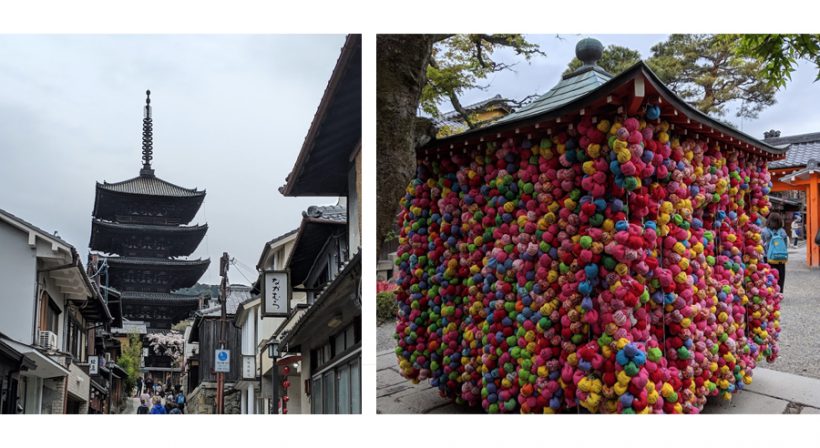
Hōkanji and Kongoji Temple
These two temples are right next two each other, though drastically different in appearance. Hōkanji was constructed by Imperial Prince Shotoku in the year 589! While Hokanji is a dark, brooding building, Kongoji temple is quite the opposite. The tiny shrine is adorned with hundreds of colorful balls. Worshipers can write their wishes on the ball, or “kukurizaru”, and hang them at the site. It is believed that if you give up one of your greeds, the wish you wrote will come true.
Kiyomizu-dera
A brief walk from Hōkanji and Kongoji, sits the much larger temple of Kiyomizu-dera. The day of our visit, the skies were gray, and the right reds and oranges used to paint the temple stuck out dramatically atop the hill. From this temple, you can see sweeping views of the city below (or at least, you could, if the sun was out!).
Nineizaka street
While walking between all of these temples, you pass through narrow, twisted, pedestrian-only streets that are lined with inviting cafes, tea shops, restaurants, and stores selling local goods.
Ryozen Kannon statue
This one is hard to miss – the 80ft statue of the Bodhisattva Avalokitesvara stands out over the top of surrounding buildings. Though it may seem like an ancient tribute, the statue was actually built in the 1950s as a war memorial commemorating the soldiers who died in the Pacific War.
Koda-ji temple
This larger temple has beautifully manicured gardens, including a bamboo grove and zen garden, surrounding the delicate buildings. We took our time wandering through the grounds, and the scenery was so peaceful we didn’t even mind the rain!
Yasaka shrine & Gion
One of the largest and most well-known in Kyoto, we finished our temple stroll here. This is sometimes referred to as the “Gion” shrine, because it sits at the edge of the Gion neighborhood, the ‘old town’ of the city. We had visited Yasaka shrine the night before for dinner – after walking through the large gates, there is almost a carnival feel – vendors line the pathways selling all types of street food. There are even a few sit-down restaurants, with outdoor seating beneath blossoming cherry trees.
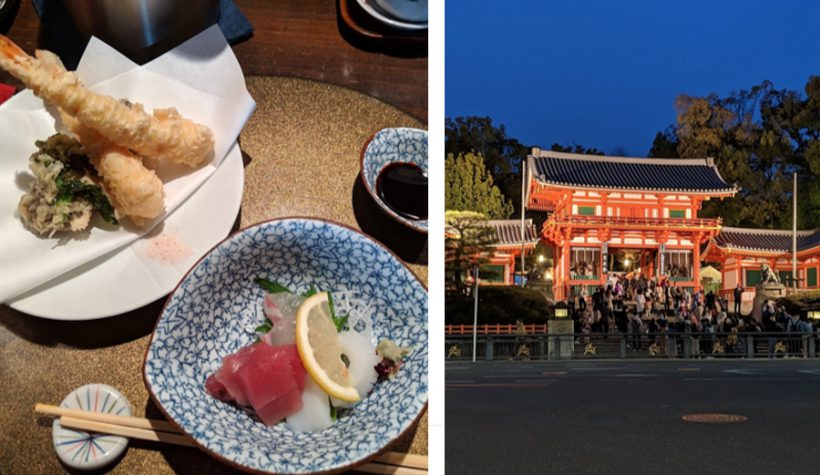
In Gion, the beauty is in getting lost wandering around the tiny, intricate alleyways. This is a great place to sample homestyle Kyoto food. We found our way into a tiny restaurant – only 2 tables and 5 stools at a counter – owned by a husband and wife who had been cooking together for 40 years. They were so friendly and welcoming, and the food was absolutely delicious.
Meet the locals
No trip to Kyoto would be complete without a day trip to Nara, the home of the now world-famous deer. Nara is a quick 40 minute train ride from Kyoto station. Once in Nara, there are 2 busses that bring you in a loop around the city to the main attractions. One operates clockwise through the loop, and the other counter-clockwise, so it’s easy to get where you want to be quickly.
We decided to start at the Todaiji temple. As soon as we stepped off the bus, we were greeted by dozens and dozens of extremely friendly deer. They freely roam the streets and parks all throughout the city; some just lounge on the grass, and some have no fear in coming up to the humans to get some food – and have even learned the Japanese custom of bowing!
We definitely came to Nara to see the deer, but the Todaiji Temple ended up being one of my favorites that we visited on the trip! The main hall was originally built in the year 752, and is the world’s largest wooden building. What makes that even more impressive is that this current reconstruction (done in 1709), is only two thirds of the original size! The intricate details on the building as well as the gates leading into it were so impressive.
But, the true work of art sits (literally) inside the temple. In keeping with the large-scale of the temple, a 50 foot bronze statue of Buddha sits at the center of the great hall. It is at once a shocking and awe-inspiring sight, and it took me a few minutes to really take in the scale of it. We spent a good amount of time in the hall, walking in a circle around the statue and taking in all of the intricacies in the design.
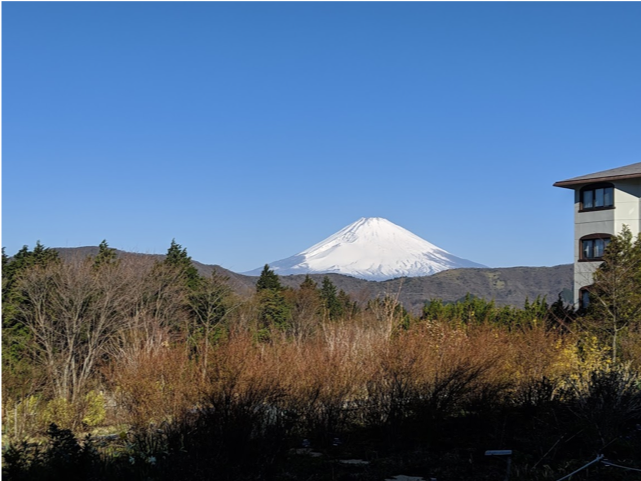
Hakone
Our last stop before we headed home was the beautiful town of Hakone. This was the perfect place to end our trip – it’s known for hot springs, a peaceful lake, and striking views of Mt. Fuji. This is the part of our trip that made me feel truly lucky. Anyone will tell you that Mt. Fuji as a tendency to hide in the clouds, and we weren’t sure we’d even get a glimpse of it. But, our timing was perfect, and the day we spent in Hakone had crystal clear skies, and our hotel was perfectly situated to capture picturesque views.
Hakone definitely has a slower pace than Tokyo or Kyoto, but it still offers a lot to see and do. You can purchase a Hakone free pass, which gives you unlimited access to most trains and buses, as well as the tourist ropeway and Lake Ashi cruise boats. It will also get you discounted entry tickets at the many art museums and private parks.
Early in the morning, we took the ropeway from our hotel down to the base of the mountain to the beautiful Lake Ashi. There we boarded a pirate ship (we’re still not clear why it’s a pirate ship), and set sail across the lake. The boat makes a few stops at smaller ports, and you can hop on and off anywhere you like with the free pass. On the other side of the lake, we decided to disembark at Hakonemachi-ko, and walk through Onshi-Hakone Park. This park had everything: beautifully manicured Japanese gardens and trees, a cedar grove that contains trees estimated to be about 400 years old, and (of course) majestic views of Fuji.
Our ultimate destination was the Hakone shrine, an iconic tori gate that appears to float in the water. This location has become increasingly popular, yet again, with the rise of Pinterest and Instagram. While planning our trip, I saw countless images of travelers posing beneath the shrine, looking peaceful and alone. When we arrived,we saw the true story – a line of dozens of people waiting to take those peaceful photos! We had a good laugh at this and admired the shrine from afar – not everything you see needs to be documented on Instagram!
As you can see, there is so much to see and do in Japan. We were able to experience so much, more than I could even write here! The question is not if you should go, it’s how long you should stay. The planning process can be daunting, which is why I started with an Explorica itinerary and used that as my guideline.
If you want to travel to Japan, let’s get the conversation started!

